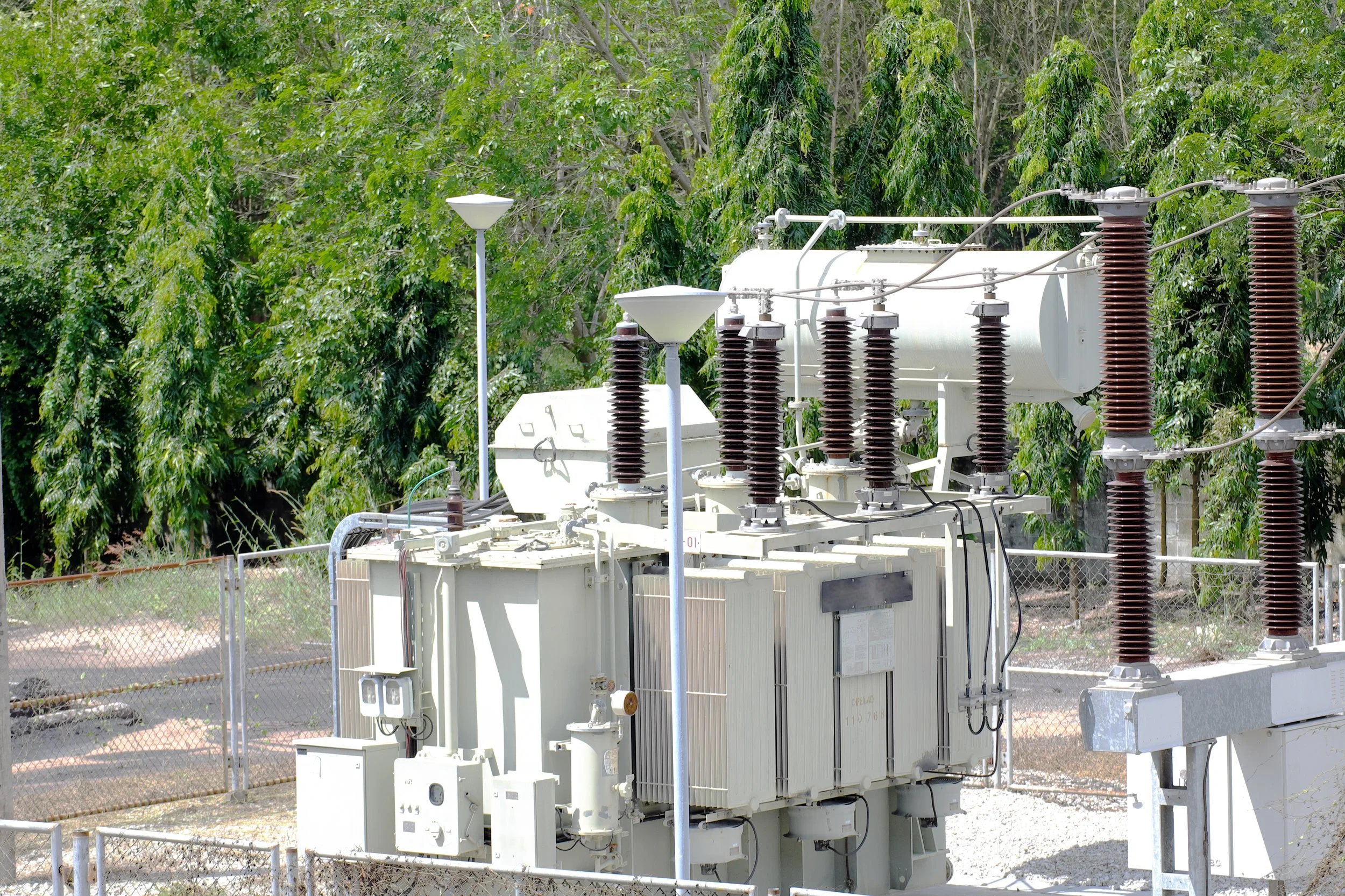Surge Arresters
/What Are Surge Arresters?
A surge arrester is a protective device used in electrical power systems to safeguard equipment such as transformers, circuit breakers, and transmission lines from transient overvoltages caused by lightning strikes, switching operations, or faults. Surge arresters help prevent costly damage and power outages by safely diverting excessive voltage to the ground.
How Do Surge Arresters Work?
Surge arresters operate by providing a low-resistance path to ground when a high-voltage surge occurs, then returning to their normal high-resistance state after the surge dissipates.
1. Normal Conditions (No Surge)
🔹 The surge arrester remains inactive, acting as an insulator in the electrical system.
🔹 The voltage across the arrester is within normal operating limits, and no current flows through it.
2. Surge Event (Lightning or Switching Surge Occurs)
⚡ When an overvoltage surge strikes (e.g., from a lightning hit or switching action):
🔹 The surge arrester’s internal metal oxide varistor (MOV) or silicon carbide material conducts high current and provides a low-resistance path to ground.
🔹 This shunts the excess energy away from sensitive equipment, preventing damage.
3. Post-Surge Recovery
🔹 Once the surge passes, the arrester quickly returns to its high-resistance state, preventing leakage current and ensuring normal system operation.
🔹 The arrester remains in place, ready for the next surge event.
Components of a Surge Arrester
Metal Oxide Varistor (MOV) – The core material that reacts to overvoltage by conducting current to ground.
Porcelain or Polymer Housing – Insulates and protects the internal components from environmental conditions.
Electrodes & Terminal Connections – Provide electrical connectivity to the system and ensure proper grounding.
Grounding System – Directs excess voltage safely into the earth.
Types of Surge Arresters
Surge arresters are classified based on their voltage application and installation environment:
1. By Voltage Class
🔹 Low-Voltage Arresters (≤ 1 kV) – Used for homes and industrial facilities to protect appliances and electronics.
🔹 Medium-Voltage Arresters (1 kV – 69 kV) – Found in distribution systems, protecting transformers and utility poles.
🔹 High-Voltage Arresters (69 kV – 800 kV) – Used in transmission substations and grid infrastructure to safeguard high-voltage power lines.
2. By Material Type
🔹 Metal Oxide Surge Arresters (MOA) – Most common type, offering superior performance and fast response times.
🔹 Silicon Carbide Arresters (Older Technology) – Requires series gaps and is less efficient than modern MOV arresters.
3. By Installation Type
🔹 Station Class Arresters – Used in substations for high-voltage protection.
🔹 Distribution Class Arresters – Installed on power distribution poles for transformer protection.
🔹 Line Surge Arresters – Mounted directly on power transmission lines to prevent lightning-related outages.
Why Are Surge Arresters Important?
Protects Expensive Equipment – Prevents damage to transformers, circuit breakers, and power lines.
Ensures Grid Reliability – Reduces downtime and service interruptions caused by voltage surges.
Improves Electrical Safety – Prevents insulation breakdown and hazardous electrical faults.
Extends Equipment Life – Reduces wear and tear on electrical infrastructure, lowering maintenance costs.
Applications of Surge Arresters
Electric Power Transmission & Distribution – Protects substations, transformers, and power lines.
Industrial Facilities – Shields machinery and control systems from electrical disturbances.
Renewable Energy (Wind & Solar) – Prevents lightning damage to turbines and photovoltaic systems.
Telecommunications – Guards communication towers and data centers from power surges.
Surge arresters are essential protective devices in power systems, designed to safeguard electrical equipment from overvoltage damage. By acting as the first line of defense against lightning strikes and switching surges, they play a critical role in maintaining grid reliability and electrical safety.




